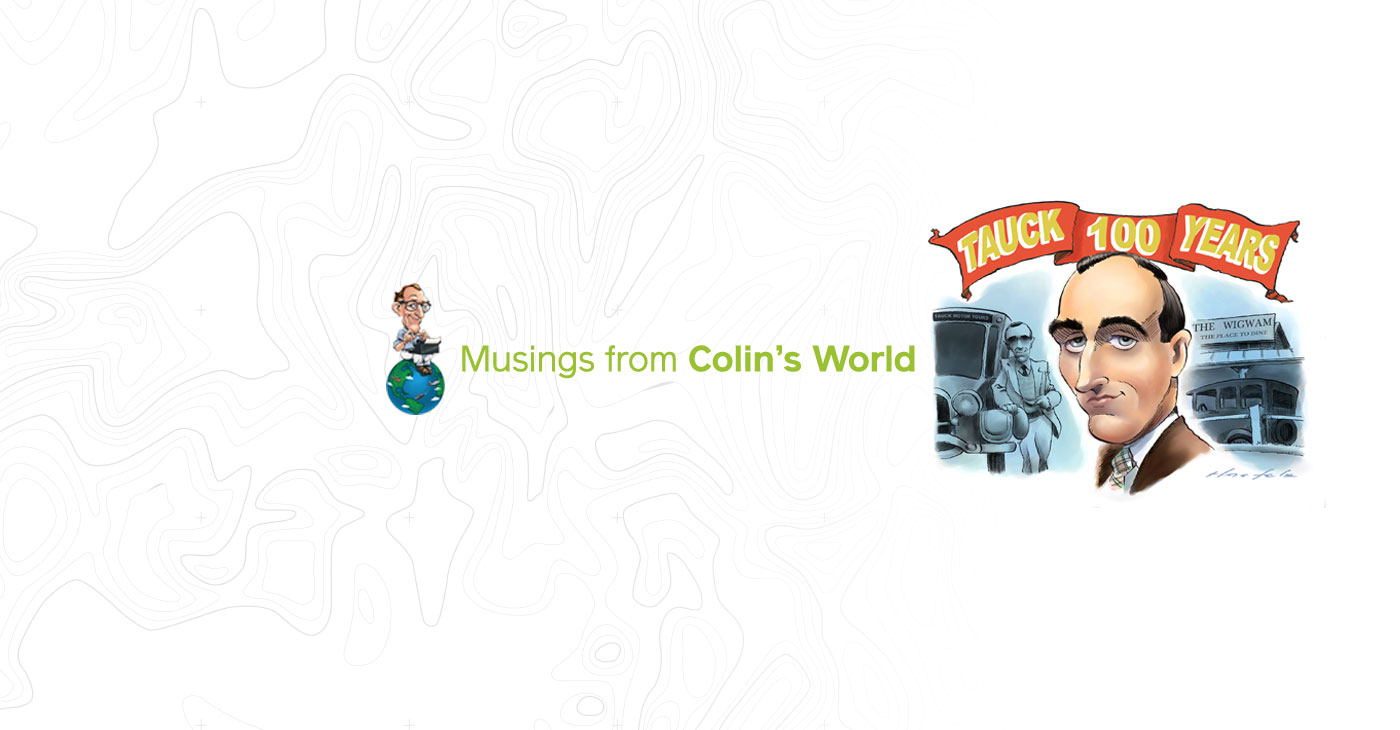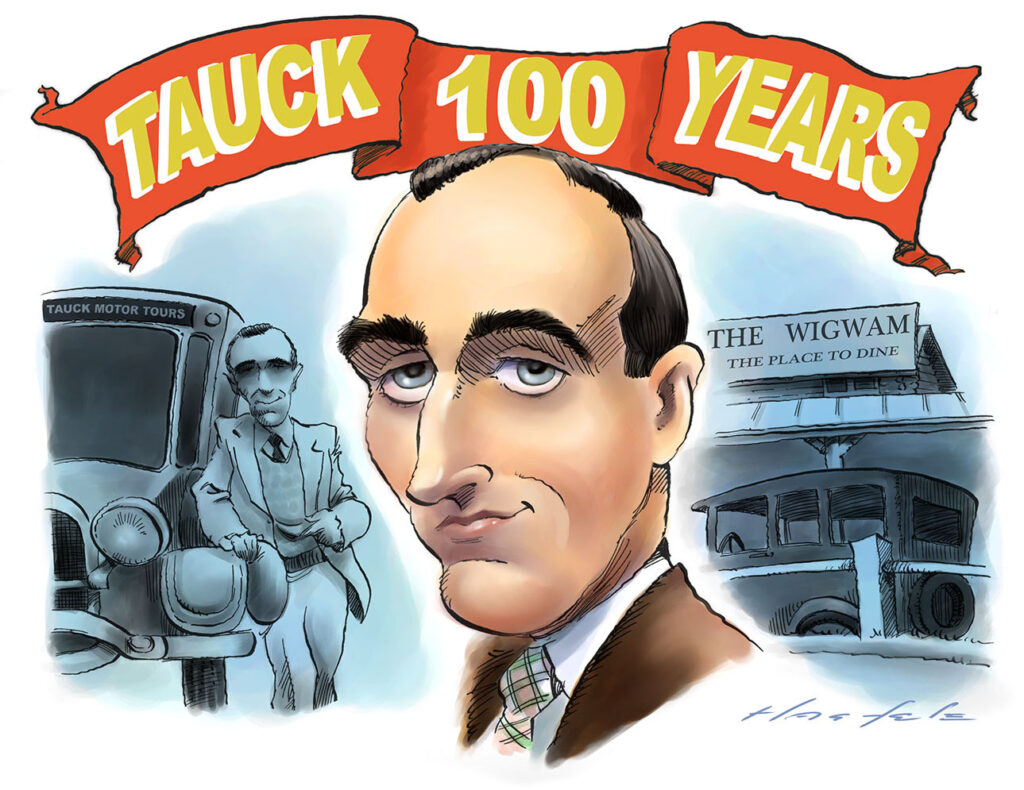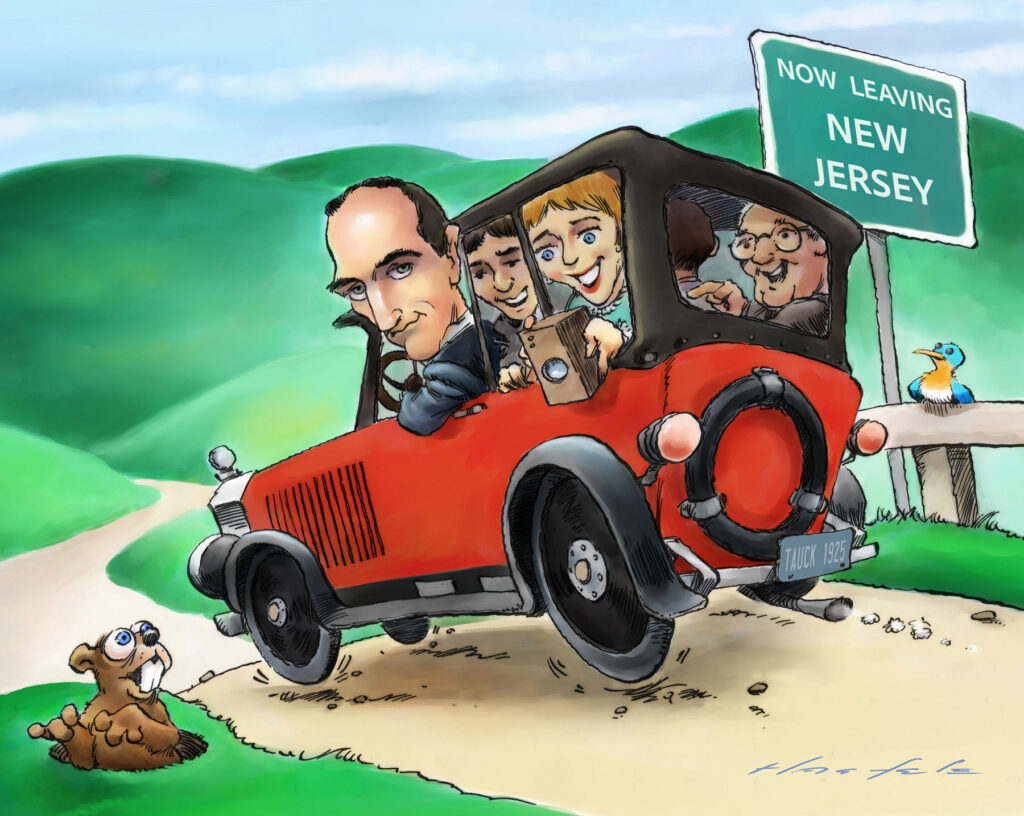


As this year marks the 100-year anniversary of Tauck, I’ve been reflecting on that history, and it really is a remarkable American story.
The company has been hosting my columns on its website for 10 years, but I was a fan of Tauck decades before, based on the work it does, and its unique contributions to the travel industry and to American life.
It all traces back to the origin story: a bank employee fired for spilling coins in an elevator shaft invented a better coin tray, hit the road to sell it to banks, discovered the joys of the open road, then built a company to share that experience.
The story has been told often, and I won’t attempt to rehash it here, except to say that the whole story of the company is embodied in that origin. It’s an example of how the cornerstone elements of any enterprise remain a part of its character forever.
Most of the basic components of what Tauck has become, a vast intercontinental tour operation with hundreds of tours and cruises operating on any given day, can be seen in their nascent form in that beginning.
The original newspaper ad that young Arthur Tauck ran in 1925 could still be seen as the model of the service Tauck would turn into a global operation.
All I want is a congenial party. Ten minutes after leaving Newark, we shall be just one happy party, properly chaperoned, out for a real good time.
The company has come a long way from this, but it’s still a fairly good description of the essence of a Tauck trip.
It’s always fascinating to speculate whether a given success story would have happened if any of the basic elements had been different from what they were.
What if the bank employee had not spilled coins and gotten fired? But then, how many people in that situation would turn around and invent a coin tray, and then take it on the road? It had to be that person. There are many elements in that story, but I can name one that I believe was essential, and that is New England.


Though Arthur Tauck Sr. was based in New Jersey, the territory he staked out to sell his coin trays, and that awakened in him to the joys of travel, was New England. Eventually, the company moved to Connecticut and made New England its home.
I’m not sure he could have started his company out west where the spaces between the towns can be vast. It seems like it had to be New England.
This was not an idea cooked up in a drawing room. It happened on the road. You couldn’t travel that way in many other places in America. Arthur Tauck discovered not just escorted touring, but New England, which was so congenial to the whole project.
Growing up in Kansas, I came late to my appreciation of New England. As a young person dreaming of travel, I longed for more exotic places. But when I got married, my in-laws lived in Maine. That’s what drew me there. But what I discovered there was far beyond my imaginings.
In land-locked Kansas, when I listened longingly to the Beach Boys singing about beaches and surfing, New England was not what came to mind. From the stories I heard, such as the Pilgrims trying to survive the winter, I thought of New England as a cold, forbidding place. That was before I discovered the beaches in Maine.
It’s true, the New England winters are harsh. But the summers are the opposite. The summer sun is out from early morning till late at night. It can get really hot, but it cools at night. The water at the beach never feels like warm bathwater. It’s always refreshing. And yes, you do see surfers.
As I write this on the summer solstice, the sunrise was at 5:03 a.m. and sunset was at 8:26. That’s when the sun passes the horizon, but the light lasts much longer. That’s the New England summer. It’s no less thrilling inland, among the lakes, rivers and mountains of New Hampshire and Vermont.
New England was where English culture was planted in America and grew into a new hybrid culture. The colonies quickly developed their own culture distinct from that of England. Life in the New World meant surviving in a frontier. It was untamed, unpredictable—an ocean away from the mother country.
Although New England was remote from England, it quickly became cosmopolitan because it was part of a transatlantic trade network that reached from the British Isles to the Caribbean, West Africa and Southern Europe. The coastal cities were hubs of culture shaped by global commerce.
Trade brought people from beyond Britain: enslaved Africans, Portuguese sailors and Dutch traders. The port cities were diverse and culturally lively. Rhode Island became a center of shipbuilding and an important part of the broader Atlantic world.
The biggest center of commerce and culture was Boston, on the Shawmut Peninsula, the site of an Algonquian village, where the Massachusetts Bay Company first set up its colony in 1630. Two years later Boston was named the capital of the Massachusetts Bay Colony.
According to its original charter, Massachusetts extended deeply into what is now New Hampshire. In 1691 it was merged with the Plymouth Colony and Maine, so that Massachusetts was most of today’s New England. Various border adjustments over the next two centuries gave parts of that territory to New Hampshire, Rhode Island and Maine, squeezing Massachusetts down to its present-day dimensions.
From the late 1600s through the 1700s, Boston was the region’s largest city and most important port, a key node in the Atlantic trade network. It was a political, religious and cultural nerve center, laying much of the groundwork for the revolutionary fervor.
You can sense the rich history of New England as you drive its highways. You don’t have to go into museums to see it. Many homes, churches and city buildings survive from hundreds of years ago.
The landscape is truly one of the most beautiful in the world, with rich forests, hills and mountains, lakes and rivers, and country roads under canopies of trees, not to mention the stunning and varied coastlines and offshore islands from Connecticut to Northern Maine. Surely that was part of what captured Arthur Tauck.
We think of New England as a single entity, but the closer you look the more variation you find within it.
Vermont, for example, is considered part of New England, New Hampshire’s twin. But it’s a black sheep in the New England family because it was never an English colony.
It was part of the French frontier, then was disputed territory, between New York and New Hampshire. It was more akin to Canada than the United States. Its name comes from the French Verd Mont, or “Green Mountain.”
In 1777, during the American Revolution, Vermont declared itself an independent republic. It had its own constitution, which banned slavery. It minted its own currency, and flirted with the idea of joining the British Empire via Quebec before joining the United States as the 14th state in 1791.
You can still feel that independent spirit in Vermont today. That’s part of what I love about it. In New Hampshire, the license plates say, “Live Free or Die,” but Vermont seems even more stubbornly independent than New Hampshire. It’s all part of the complex cultural tapestry of New England.
In some places you try to do as much as you can in one visit. Other places you go back over and over. You witness the changing seasons and times there, and nurture a sense of connection that reassures you that some things in life endure. New England has been that for me.
New England was the place that inspired Arthur Tauck Sr. to start a touring company in 1925. The character of both the company and the region were crystallized in their origins.
Tauck has been one of the major creators of the modern travel industry, and as a lover of travel I feel a special sense of gratitude to New England for its part in the story.
And there is always more to discover there. I have only begun.
Your humble reporter,
A. Colin Treadwell
Please visit:
Our Sponsor
